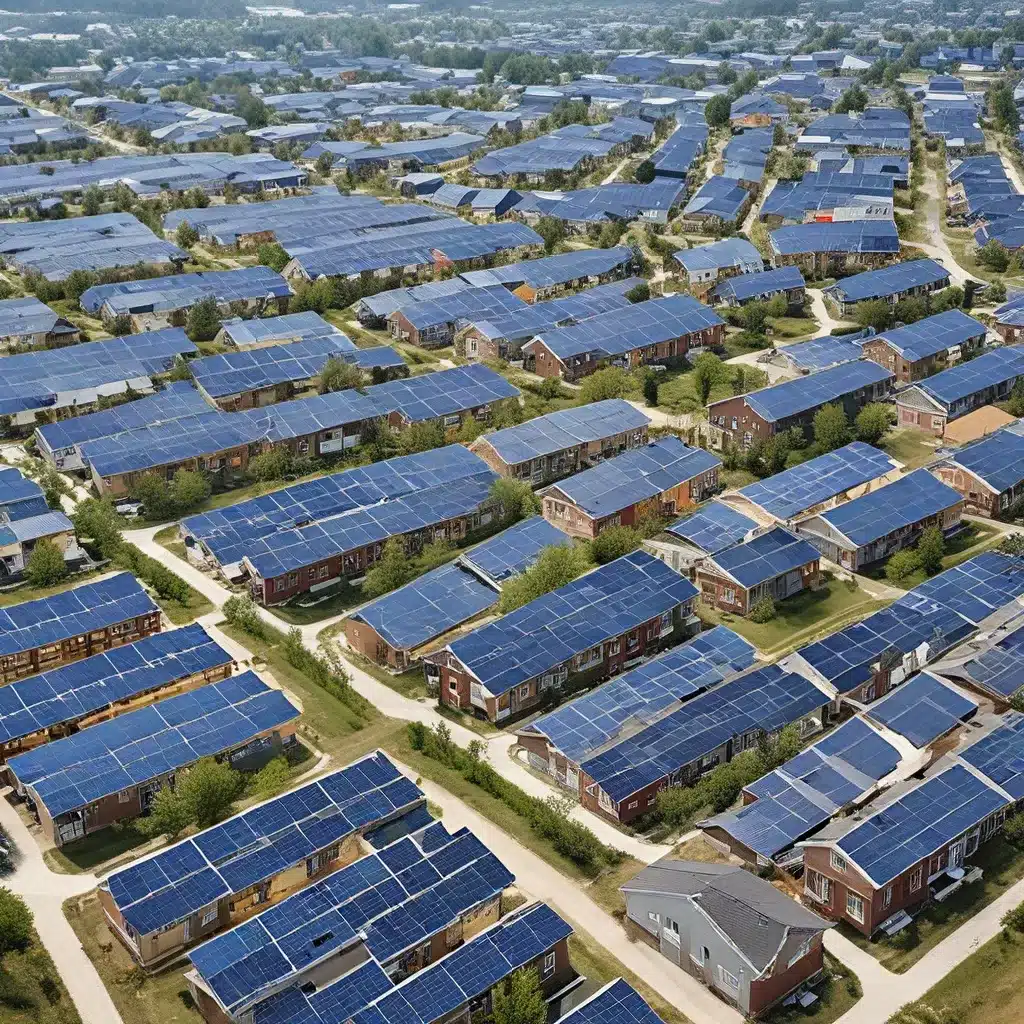
As a passionate advocate for renewable energy and sustainable community development, I’m thrilled to share my insights on this crucial topic. In a world grappling with the relentless challenges of climate change, I believe we have a unique opportunity to harness the power of clean energy and create vibrant, resilient neighborhoods that can withstand the storms ahead.
Let me take you on a journey through the inspiring initiatives unfolding in Detroit, where the city is leading the charge towards a sustainable future. The Detroit Climate Strategy has set an ambitious goal: to transition the city to 100% clean renewable energy by 2034. And at the forefront of this effort is the Neighborhood Solar initiative, a groundbreaking project that’s transforming vacant lots into sites of clean energy production.
But this isn’t just about generating green power; it’s about empowering communities and fostering a sense of resilience that can withstand the impacts of climate change. By repurposing underutilized land, the city is creating a network of solar arrays that will not only offset the energy needs of municipal buildings but also provide tangible benefits to the residents living in these neighborhoods.
Prioritizing Community Engagement and Equity
The key to the success of the Neighborhood Solar initiative lies in its unwavering commitment to community engagement and equity. Rather than imposing a top-down approach, the city has collaborated closely with local nonprofits, environmental groups, and energy experts to ensure that the voices of the residents are heard and their needs are prioritized.
Through a rigorous months-long community engagement process, the city’s Office of Sustainability and Department of Neighborhoods worked hand-in-hand with the Neighborhood Solar Partners (NSPs) to engage with dozens of neighborhood meetings. This collaborative effort has resulted in the selection of the Gratiot-Findlay, Van Dyke-Lynch, and State Fair neighborhoods as the first three solar neighborhoods.
But the story doesn’t end there. The city has also recognized the potential impact on homeowners living within the solar footprint and has put in place a comprehensive community benefits program. Each acre contributed to the solar arrays will provide up to $25,000 in benefits for energy-efficient upgrades, prioritizing affected homeowners and renters. These upgrades can include everything from window replacements and roof repairs to energy-efficient appliances and smart thermostats, all aimed at reducing energy burdens and promoting overall resilience.
Fostering Equity and Empowering Residents
The Neighborhood Solar initiative goes beyond just generating clean energy; it’s about empowering residents and building a more equitable future. The city has even proposed a $4.4 million equity fund to support homeowners in the remaining neighborhoods who find themselves in a state of limbo, unable to make decisions about their homes until the next phase of the project is announced.
What’s truly remarkable about this initiative is the way it seamlessly aligns with the city’s broader sustainability goals. By offsetting the electricity demands of 127 city buildings, including critical infrastructure like police stations, fire stations, and recreation centers, the solar arrays will make a significant contribution to the city’s greenhouse gas reduction targets. In fact, the Neighborhood Solar initiative is expected to offset a whopping 23% of the city’s 2012 emissions levels, putting Detroit on track to achieve its municipal goals.
The Path to a Sustainable and Resilient Future
But the impact of this initiative extends far beyond the city’s environmental objectives. It’s also about fostering community wealth-building, creating quality jobs, and enhancing energy resilience. By involving local partners and prioritizing community benefits, the Neighborhood Solar initiative is empowering residents to take an active role in shaping the future of their neighborhoods.
As I delve deeper into this inspiring story, I can’t help but draw parallels to the work being done by the Firewinder team, who are also dedicated to expanding access to renewable energy solutions and building sustainable communities. Their commitment to innovation, community engagement, and equitable practices aligns seamlessly with the vision of the Neighborhood Solar initiative.
Lessons for a Sustainable Future
So, what can we learn from the Neighborhood Solar initiative in Detroit? Firstly, it’s the power of community-driven solutions. By prioritizing the voices and needs of residents, the city has created a model that truly resonates with the people it aims to serve. This approach not only fosters a sense of ownership and investment but also ensures that the benefits of clean energy are distributed equitably.
Secondly, the initiative highlights the importance of bridging the gap between sustainability and community development. Too often, these two crucial elements are viewed in silos, but the Neighborhood Solar project demonstrates that they can and should work in tandem. By aligning the city’s climate goals with its broader vision for resilient, vibrant neighborhoods, Detroit is setting a shining example for cities around the world.
And lastly, the Neighborhood Solar initiative underscores the transformative potential of renewable energy. It’s not just about generating clean power; it’s about creating a more sustainable and equitable future for all. As we continue to grapple with the urgent challenges of climate change, it’s imperative that we embrace innovative solutions like this and empower communities to take charge of their own destinies.
As I wrap up this exploration of the Neighborhood Solar initiative, I’m filled with a renewed sense of optimism and determination. The work being done in Detroit is a testament to the power of collaborative, community-driven action, and it serves as a blueprint for cities everywhere that are seeking to build a more resilient and sustainable future.
So, let’s continue to learn from these inspiring stories, let’s support the pioneers paving the way, and let’s all do our part to create the vibrant, renewable-powered neighborhoods of tomorrow. The future is ours to shape, and the time to act is now.

